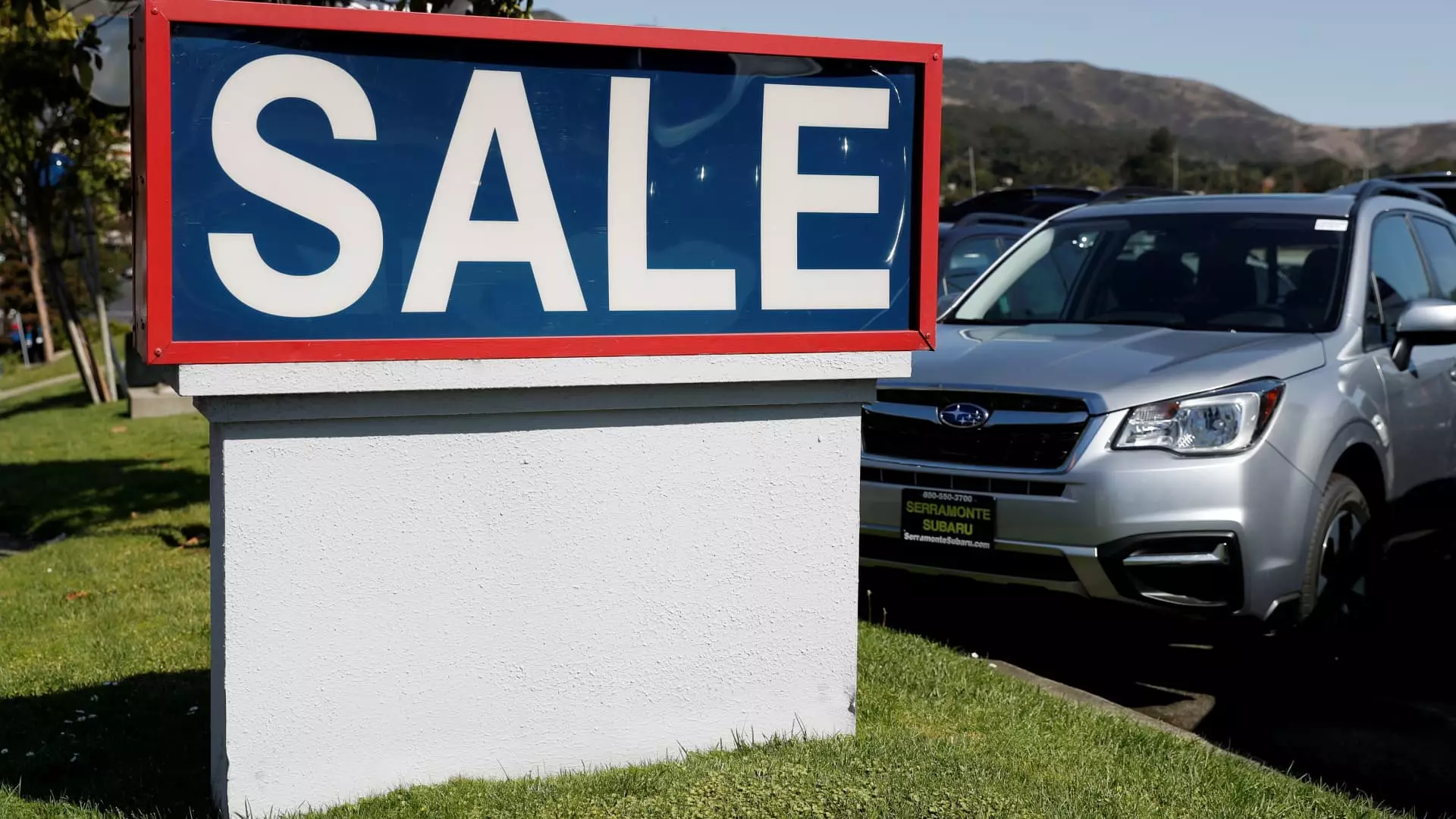The automotive landscape in the United States is on the cusp of a significant transformation, as industry analysts project a notable rebound in new vehicle sales over the next year. With a combination of reduced interest rates, improving vehicle affordability, and a stabilization of inventory levels, the market is poised to reach heights not seen since 2019. This article examines the key factors contributing to this anticipated growth and the implications for consumers and manufacturers alike.
According to recent projections from Cox Automotive, new light-duty vehicle sales in the U.S. are expected to hit an impressive 16.3 million units in 2025. This projection slightly eclipses the forecasts made by renowned agencies like S&P Global Mobility and Edmunds, who estimate sales at about 16.2 million. This anticipated volume represents a modest increase from the estimated sales figures of 15.9 to 16 million for the current year. Such growth, while cautious, indicates a market reawakening after years of stagnation spurred by pandemic-induced challenges.
The driving forces behind this sales improvement can be identified as a “normalization” of supply chains plagued by shortages, coupled with actionable incentives from manufacturers aimed at enticing consumers back into showrooms. Industry experts, including Jessica Caldwell, the head of insights at Edmunds, affirm that while economic pressures persist, the automotive market appears increasingly accommodating to buyers compared to earlier in the fiscal year.
The Shifting Landscape of Vehicle Pricing
One noteworthy trend is the divergence of vehicle pricing trends over the years. Edmunds recently reported that the average transaction price for new vehicles dropped slightly to $47,465 in 2024, representing a 0.8% decrease from 2023. Nevertheless, it illustrates a dramatic 27.2% surge compared to the $37,310 average in 2019. This discrepancy points to a paradox for consumers: while prices are stabilizing, they remain fundamentally higher than pre-pandemic levels.
As automakers respond to shifting market demands, the growth of entry-level and affordable vehicles is becoming increasingly pronounced. These models, often sidelined amid years of inflated pricing and limited availability, are essential for capturing the attention of budget-conscious buyers. The industry’s focus on more affordable offerings could reshape consumer behavior and purchasing decisions moving into 2025.
The Electric Vehicle Boom Continues
Another area of anticipated growth lies in electrified vehicles. Forecasts suggest that all-electric vehicle sales will reach a remarkable 1.3 million units in 2024, capturing about 8% of the market share—an uptick from 7.6% the previous year. However, this increase falls short of earlier expectations of a 10% share. Analysts attribute this tempered outlook to factors such as regulatory uncertainties and the potential winding down of federal tax incentives that historically stimulated consumer interest in electric vehicles.
The current market is led by familiar contenders: Tesla, Hyundai Motor Group, and General Motors. While Tesla’s share has dipped below the 50% mark, its Model Y and Model 3 continue to dominate sales figures. In contrast, General Motors experiences a significant growth trajectory, gaining approximately 2.7% in market share at the brand level. This competitive shift reflects the dynamic nature of the automotive sector, where innovation and consumer preferences increasingly dictate market positions.
The outlook for the automotive market is not without its uncertainties. Following the election of President Donald Trump, potential regulatory changes, including tariff threats against vehicle imports from Canada and Mexico, loom large. Cox Automotive’s chief economist, Jonathan Smoke, notes the profound implications such tariffs could have on vehicle production and pricing frameworks. Consequently, these factors may force consumers to adjust purchasing timelines, anticipating price hikes.
Moreover, analysts have indicated that the expected rise in new vehicle sales may paradoxically challenge automakers’ profitability due to the necessity of increased incentives and the eventual decline in pricing. As competition intensifies amid rising inventories, many industry players may struggle to maintain their margins, a scenario raised by Wells Fargo’s analyst Colin Langan in a recent report.
As the automotive industry navigates a path toward growth, the road ahead will undoubtedly feature its share of challenges and opportunities. For consumers, a more favorable landscape is emerging, characterized by greater affordability and an expanding range of vehicle choices, particularly in the realm of electrification. However, the specter of regulatory changes and fluctuating market dynamics will continue to shape the industry in complex ways, underscoring the need for adaptability and strategic foresight among automakers and consumers alike.
The momentum observed in U.S. new vehicle sales offers a beacon of hope for recovery, but industry stakeholders must remain vigilant as they maneuver through an evolving economic and regulatory landscape. The next few years will be critical in defining the future of the automotive market and its relationship with the American consumer.


Leave a Reply